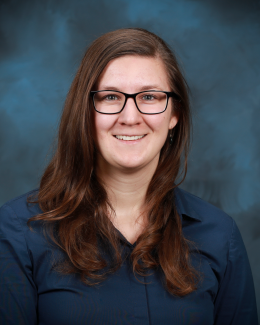
The Department of Energy has selected 53 projects to receive a combined total of $140 million funding to accelerate innovations in clean energy technologies and low-carbon manufacturing.
Two ORNL research projects were awarded through the Chemical and Materials Sciences to Advance Clean Energy Technologies and Low-Carbon Manufacturing funding opportunity, sponsored by the Office of Basic Energy Sciences within the DOE Office of Science.
“The research projects announced today will strengthen the scientific foundations needed for the United States to maintain world leadership in clean energy innovation, from renewable power to carbon management,” said U.S. Secretary of Energy Jennifer Granholm.
The clean energy and manufacturing awards are a new funding opportunity from the Office of Science designed to build foundational knowledge on approaches to capture, produce, convert, store, and use energy that reduce carbon emissions. The goal to transform the nation’s energy production landscape covers broad research topic areas, including hydrogen fuel, solar energy, carbon capture, energy storage, nuclear energy, transformative manufacturing, and critical minerals and materials.
ORNL was awarded in the Carbon Dioxide, CO2, Removal category for a proposal on “Fundamental Mechanisms Driving Efficiency of CO2 Capture Using Mineral Looping,” led by Chemical Sciences Division’s Juliane Weber. The project focuses on mineral looping, a promising method for inexpensively capturing carbon dioxide directly from the atmosphere on a gigaton scale.
Many rocks and minerals naturally react with CO2 as they age, but this weathering process occurs on geologic timescales that are not sufficient to mitigate current emission levels, now exceeding 30 gigatons per year. “One idea is to use mineral-derived materials that can scrub CO2 from the atmosphere, are regenerated and reused, and then inject the captured CO2 underground” said team member Andrew Stack, who leads ORNL’s Geochemistry and Interfacial Sciences group. The team will combine unique characterization and modeling approaches to advance fundamental understanding needed to create economic, scalable methods of direct air capture.
In the Transformative Manufacturing category, ORNL was awarded for a proposal on “Targeted, Scalable Synthesis of Multidimensional Macromolecules to Transform Additive Manufacturing,” led by Chemical Sciences Division’s Amit Naskar. The project focuses on the design of polymers with tunable properties for additive manufacturing, or 3D printing.
Polymers and commodity plastics are attractive materials for 3D printing because of their low cost and processibility. They flow easily and harden into rigid structures, offering both the strength and flexibility needed to achieve complex geometries through rapid, high-volume production. During 3D printing a 3D part comprised of successive layers of deposited material, the process introduces stresses and defects between layers which ultimately limit performance. “While the polymer may possess the ideal bulk properties, the common additive manufacturing process often fails to deliver parts which realize the polymer’s intrinsic capability” Naskar said. “It is a fundamental obstacle that we must learn how to address.” The team will combine theory, experiment, and computation to gain fundamental insights on tailoring polymer design to additive manufacturing.
Both ORNL projects are expected to receive up to $1.5 million funding per year for a period of 3 years.
UT-Battelle manages ORNL for the DOE’s Office of Science, the single largest supporter of basic research in the physical sciences in the United States. The Office of Science is working to address some of the most pressing challenges of our time. For more information, please visit energy.gov/science.



